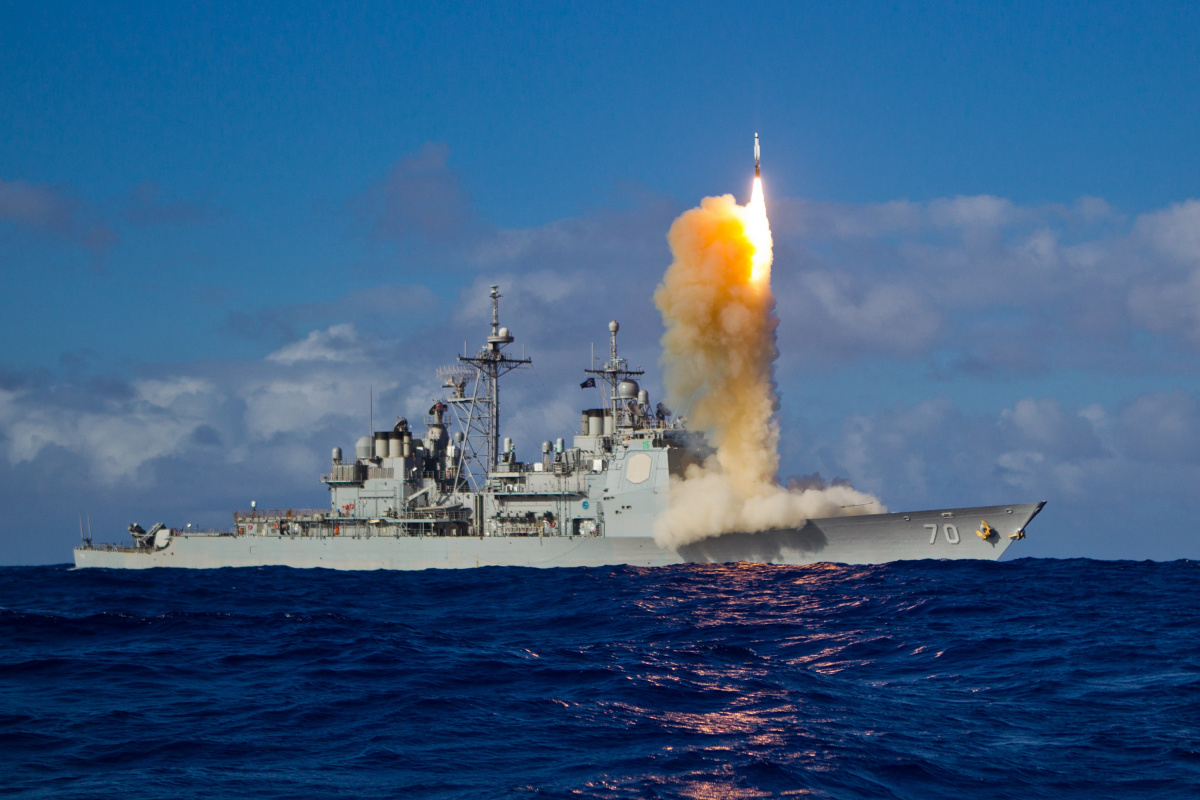Late last week, the United States tracked a North Korean intermediate range ballistic missile (IRBM) test that once again overflew Japan before landing in the Pacific.
The IRBM is the latest in a series of North Korean provocations this year that has included the test of a hydrogen bomb and an intercontinental ballistic missile (ICBM) among other events. There is little the United States and its allies can do in response except to deter Pyongyang. Suggestions that the United States and Japan shoot down North Korean missile tests—an option often bandied about by certain political commentators are fanciful. Neither the United States or Japan likely has such a capability—even if they were so inclined.
“U.S. Pacific Command detected and tracked what we assess was a single North Korean ballistic missile launch at 11:57 a.m. (Hawaii time) Sept. 14. Initial assessment indicates the launch of an intermediate range ballistic missile (IRBM),” U.S. Pacific Command spokesman Cmdr. Dave Benham wrote in a Sept. 14 email.
“The launch occurred in the vicinity of Sunan, North Korea and flew east. The ballistic missile overflew the territory of northern Japan before landing in the Pacific Ocean east of Japan. We are working with our interagency partners on a more detailed assessment and we will provide a public update if warranted.”
Kingston Reif, director for disarmament and threat reduction policy at the Arms Control Association told The National Interest last month that intercepting such tests would be extremely difficult. Other experts also agreed with Reif’s assessment.
“Shooting down a North Korean missile on a test trajectory—as was the case with the 8/29 HS-12 test—is an entirely different and even more difficult challenge,” Reif said.
“Our BMD systems are not designed or postured to defend the open ocean. And we couldn’t rely on THAAD, since there are no THAAD batteries in the Japan. Patriot is also a no go, since it is designed to defend against slower short-range missiles during their terminal phase.”
In theory, it might be possible to shoot down North Korean ballistic missiles below the intercontinental ballistic missile (ICBM) class using the U.S. Navy’s Aegis cruisers and destroyers. However, it would be extremely difficult—and would compromise the defenses of populated areas.
“Shooting down a North Korean non-ICBM test might theoretically be possible using SM-3 interceptors launched from Aegis ships in the region,” Reif said.
“But it would be a highly demanding task and entail a significant amount of guesswork, as the ships would have to be in the right place at the right time to stop a test at sea. Doing so also would mean taking them away from optimal positions to defend actual targets on land.”
But even then, Reif notes that the SM-3 has only been tested against an IRBM target once. “According to Missile Defense Agency data, the existing Aegis interceptors have only been successfully tested once against an IRBM-class target. The faster SM3-IIA under development by the United States and Japan will provide much great capability versus IRBMs, but it is not yet deployed.”
At best, the SM-3 would be able to intercept a ballistic missile in the mid-course part of its flight. “We’d have no shot against an IRBM, or a MRBM or SRBM for that matter, during the missiles boost phase as that is beyond the capability of the SM-3 interceptor,” Reif said.
“For a midcourse intercept, that would depend on the trajectory, how much warning we had, and how many ships were deployed and where (Note: that the recent accidents involving the Aegis-equipped USS Fitzgerald and McCainimpacts how many ships the U.S Navy could bring to bear in the region).”
It would have taken an incredible stroke of luck for the United States and Japan to have intercepted the recent North Korean IRBM test.
“Aegis ships positioned in the Sea of Japan to protect key populations centers and critical military assets in Japan against SRBMs/MRBMs likely would not have been able to engage an IRBM flying over northern Japan,” Reif said.
“Unless a ship happened to be positioned exactly along or near the flight path of the test, midcourse intercept is probably out of the question. A terminal shot—as the RV is reentering the earths atmosphere—might have been possible, but the SM-3 has never been tested in that mode and would require North Korea to tell us where the missile would land.”
In Reif’s view, shooting down a North Korean ballistic missile—or worse—trying to shoot one down and missing would be counterproductive.
“Even if the stars were aligned however, attempting to shoot down a non-threatening missile test would be hugely provocative act and supply invaluable data to adversaries,” Reif said.
“A miss, which is more likely than an intercept, would be embarrassing and undermine confidence in U.S. defenses. Even a hit would be escalatory, expend an expensive round, and create an expectation to shoot down future tests, which could lead to a failure down the road.”
Ultimately, the problem is that missile defenses can be overcome easily by adding more or better decoys and other countermeasures—or simply overwhelming the system with numbers. Interceptors are expensive and several missiles have to be launched at an incoming target to ensure a reasonable probability of kill.
“Calls to shoot down DPRK missiles tests reflect widespread overconfidence in the efficacy and importance of missile defense,” Reif said.
“Missile defense is not an escape route from our and our allies vulnerability to a nuclear-armed North Korea, which is taking steps to evade our defenses and can build more missiles to overwhelm our defenses.”
In the end, only diplomacy has any chance of resolving the North Korea problem.
–
Dave Majumdar is the defense editor for The National Interest. You can follow him on Twitter: @Davemajumdar.







